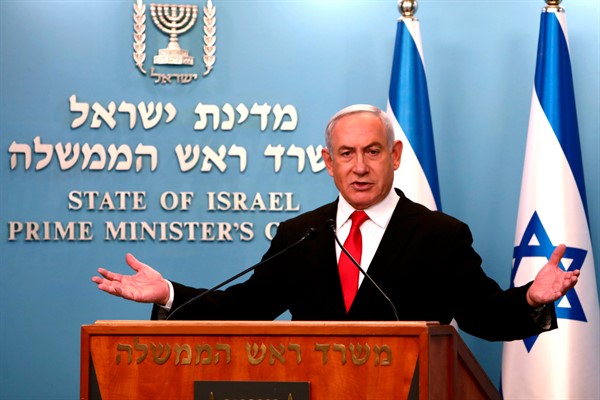After three weeks of negotiations, Israeli Prime Minister Benjamin Netanyahu and leading opposition figure Benny Gantz agreed to form a national unity government last week. While the idea of a unity government between Netanyau’s right-wing Likud party and Gantz’s centrist Blue and White bloc had been discussed on both sides over the past year, what finally broke the logjam after three inconclusive elections since April 2019 was the public health crisis and economic recession caused by the coronavirus pandemic. Gantz, facing the difficult choice of breaking his core campaign promise to not serve alongside Netanyahu or taking Israel to a costly fourth election amid a national emergency, chose the former.
Gantz’s explosively controversial move has rippled through the Knesset, Israel’s 120-seat legislature, drastically altering the political landscape. First, the announcement of the unity government precipitated the breakup of Blue and White and its four-member leadership team, known in Israel as the “cockpit.” Gantz and co-chief Gabi Ashkenazi, both former heads of the Israel Defense Forces, pursued talks with Netanyahu, while the two other Blue and White leaders, former Finance Minister Yair Lapid and former Defense Minister and IDF Chief of Staff Moshe Ya’alon, established themselves as the largest opposition party by merging their previous parties, Yesh Atid and Telem.
Even within smaller factions, Gantz’s decision caused churn. The left-wing Labor-Meretz alliance has broken up, with Labor electing to join Gantz in the government and Meretz remaining in the opposition. But Labor’s remaining lawmakers in the Knesset—now only three—were split over the decision of whether or not to enter the government. Meanwhile, Ya’alon’s two Telem acolytes are leaving him to establish their own two-man party in order to break away from Gantz.

